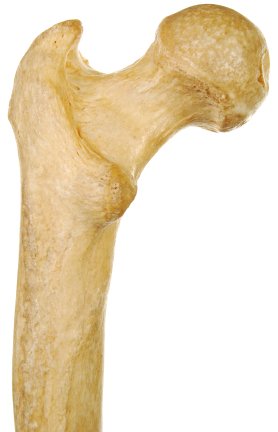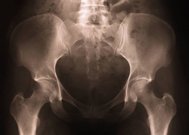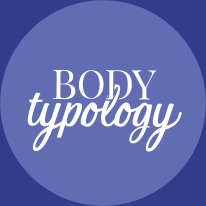Natural Osteoporosis Treatment
Guidelines
For natural osteoporosis treatment we need to look at what makes for healthy bones. First of all, even though they are dense, it is important to remember that bones are not static. They are living tissues that are continually being renewed. They store minerals and build white and red blood cells. Bones protect the brain, spinal column and internal organs from injury.
"Osteo" means bone, "Porosis" denotes porosity. In osteoporosis, bone density is low and the bones are thin. Do you think you may be at risk? Check your osteoporosis risk factors. Learn about bone mineral density (BMD) and exactly how to interpret your bone density test results.
The 4 Main Keys to Bone Health:
|
1. Mineral intake and transport |
 |
1. If you are taking minerals and supplements and they are not being transported to where they are needed, then you have a healthy toilet!
We will go into mineral intake and transport for your natural osteoporosis treatment at length below.
2. Osteoporosis exercises are key in bone strength. Using free weights builds bone and connective tissue. Impact activities and balancing exercises also help build bone and reduce risk of falling.
3. Overacidity of the body causes loss of alkaline minerals (calcium, magnesium and potassium) from the bones and is one of the leading causes of osteoporosis. Test your body's pH balance. Diet plays a key role because it is essential to maintain a pH balance for bone health. More about diet for osteoporosis. Find foods rich in vitamin D. Another good way to reduce acidity in the body is dry brushing the skin.
4. Structural alignment such as that done by a chiropractor or osteopath takes the stress off the muscles and nerves and helps to maintain balance.
Another factor in natural osteoporosis treatment is to have kidneys that are functioning well. The kidneys control the circulation of vitamin D in the blood. If we don’t have the right amount of Vitamin D 3, the calcium is not transported to the bones. Chronic kidney disease can shut down the production of new bone “building.” In turn, the parathyroid gland will work to prevent this, throwing the hormones off balance.
Mineral Intake and Transport

Calcium supplements are not the solution to bone problems.
Calcium is the most abundant mineral in the body, however all of our macro minerals and trace minerals are important for bone health, including calcium.
If calcium is not available in the blood, the body will draw it from the bones. Just because there is not enough calcium in the blood doesn’t mean there isn’t enough calcium in the body. It could be stuck in the liver, or in a digestive colon that is congested, or in the interstitial fluid (the fluid that bathes and surrounds the cells), or the lymphatic system.
This is the key, as it is not how much calcium you are taking, or if you are eating many foods high in calcium but what has been transported to the cells and absorbed.
Calcium absorption
The amount of calcium we absorb is dependent on a number of factors.

- Acidic conditions in the intestine
- Normal Vitamin D level
- Estrogen levels
Xenoestrogens (literally foreign estrogens) are hormone mimickers that mimic the effect of estrogen in the body. They are found in our food, soil, and air as well as in chemical cleaning supplies, plastic, chlorinated products, etc. Due to the overabundance of xenoestrogens, estrogen levels get thrown off, especially in post menopause, so this can affect calcium absorption.
Calcium needs to be bound to either protein or an alkaline buffer. However, many people have bodies that are overly acidic or are not metabolizing protein correctly, which leads to too much calcium, blocked arteries, unhealthy calcifications, arthritis, calcium deposits, gall stones, etc.
Vitamin D osteoporosis link
Vitamin D is vital in helping the body absorb calcium. If you are over age 50, or are at risk for osteoporosis, a supplement is recommended. If you are worried you are not getting enough vitamin D, check vitamin D deficiency symptoms.
Magnesium
If you take too much calcium it blocks magnesium absorption and magnesium is very important as a catalyst to help the absorption of other minerals and nutrients. Magnesium is also good for depression, relaxation and insomnia when taken at night.
Magnesium is involved with the structure of the bone. More people are deficient in magnesium than calcium. A good source is chlorophyll-rich foods, such as dark leafy green vegetables. Find more magnesium rich foods.
Phosphorus is the second most abundant mineral in the body, and with calcium it builds strong bones and teeth.
The thyroid and parathyroid raise blood calcium by stimulating the bones to release calcium, the kidneys to conserve calcium, and the intestines to absorb it.
Potassium is the third most abundant mineral in the body. It plays a role in bone density and health and helps prevent osteoporosis. It helps to counteract the increased urinary calcium loss due to high dietary salt intake. It is abundant in dark leafy green vegetables.
Silica is a trace mineral found in bones, teeth, skin, eyes, glands and organs. It keeps bones flexible and works with calcium, magnesium and Vitamin D3 to maintain bone strength.
Osteoporosis Prevention
- Adequate intake of calcium, magnesium, silica and other bone-building minerals
- 2000 + IU/day of vitamin D3 to help the body absorb calcium properly
- Weight bearing exercises
- Balance hormones – black cohosh is good
- Healthy diet
In order to be effective, estrogen needs vitamin D3. Phytoestrogens, such as fermented soy (like miso) are very beneficial for osteoporosis prevention.
To keep bones healthy avoid:
- Alcohol
- Smoking
- Caffeine
- Soft drinks
- Excessive weight
The best book by far to help you with your treatment for osteoporosis is Better Bones, Better Body: Beyond Estrogen and Calcium by Susan Brown, Ph.D. An excellent, comprehensive program that will help you make the right decisions for yourself regarding diet, exercise, supplements and therapies.
Strong Women Strong Bones by Miriam Nelson, Ph.D. is also very good, highlighting everything you need to know to prevent, treat and beat osteoporosis.
There is so much you can do to prevent or completely reverse osteoporosis.
Contact me today to learn how I can help you learn everything you need to do to keep your bones healthy and strong.
What is your opinion of Bisphosphonates?
Submitted by Shelly
(Colorado )
Hi Sue Anne, I am in my late 40s and so far have not had any problems with bone density.
But, it seems like more and more bone density medicines are being prescribed for women my age and older. These medicines make bones harder but seem to come with quite a few side effects and stay in your system for a very long time.
I hope to avoid taking them. What is your opinion of Bisphosphonates?
thanks,
Shelly
Sue-Anne's Reply:
Many people think of bone as a static, solid mass, but in actual fact it is a substance that is living and constantly changing. Osteoblasts are the cells that build up new bone material and osteoclasts are the cells that break down the old, dead bone cells and remove it.
Bisphosphonates like Fosamax, prevent osteoclasts from breaking down the old, dead bone cells. The pharmaceutical industry has found a way to improve the numbers on bone density tests, but at what price? With long term use the bones are now made of old, brittle, bone cells. About 5 years later fracture risk is much higher and it is very difficult for these fractures to heal.
Many dentists refuse to do dental work on people taking these drugs as another side effect is osteonecrosis of the jaw, in which the bone in the jaw begins to disintegrate. All medications have serious side effects. For more information on how to improve bone health naturally.
Reversing T scores naturally
Submitted by Mary
(London UK)
I am 62 and am undergoing hormone therapy for breast cancer.
My T score is -2.8 for the spine and -2.1 for the hip. I have osteoporosis and celiac disease. How does my score compare with women of the same age. Can the scores be reversed? I have given up smoking.
Sue-Anne's Relpy:
Good for you for giving up smoking!
Your T scores are low and yes, there is much you can do to improve your scores. A colleague helped a woman whose test results at age 57 were -1.8 for the spine and -0.8 for the femur. 5 years later at age 62 her scores were -0.3 for the spine and -0.3 for the femur. So at age 62 she had the spine density of a 49 year old and the femur density of a 42 year old.
She improved her scores by eating more healthy, reducing stress and acidity, ensuring she was getting and absorbing adequate protein and taking vitamins and supplements. She didn't take any medication.
I have a lot of information on helping osteoporosis on my site.
I would highly recommend a pH test , to see if your body is overly acidic, as that is one of the main causes of osteoporosis. A body that is overly acidic leeches calcium from the bones.
Ensure that you are eating a very healthy diet with loads of fresh vegetables especially dark leafy greens. Avoid the 4 whites, white sugar, white flour, white pasta, white rice. Avoid coffee, tea and soft drinks.
